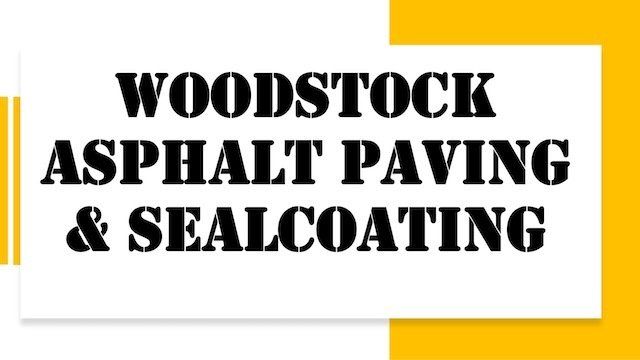Old Asphalt Removal What to Know Before the New Surface Installation
When you drive down a freshly paved road or walk across a newly renovated parking lot, your attention likely focuses on the smooth, gleaming asphalt under your feet or tires. But did you know there's a complex process involving the removal of old asphalt that takes place before the new surface is even laid?
This vital step ensures the longevity, safety, and appearance of the new asphalt. If you’re curious about what really goes into eliminating the old to pave the way for the new, this blog post will walk you through the important steps, methods, and tools involved in old asphalt removal.
Why Old Asphalt Removal Is Essential
Old asphalt removal is the foundation for creating a durable, effective new surface. Over time, asphalt deteriorates due to weather exposure, vehicle traffic, and natural wear. Cracks, potholes, and uneven surfaces form, impacting not only the appearance but also the functionality and safety of the space.
Removing the old asphalt ensures that any underlying issues are addressed. Skipping this step or cutting corners may result in premature damage to the new surface, leading to higher maintenance costs later. Here’s why removal plays such a critical role:
- Structural Integrity: Removing old, damaged layers prevents surface flaws from transferring to the new asphalt.
- Drainage Improvement: Ensures the underlying foundation supports proper water drainage, reducing risks of water pooling and erosion.
- Longevity: Proper preparation creates the conditions necessary for new surfaces to last for many years.
Fun Fact: Did you know that most of the asphalt removed during this process is recycled and reused? According to the National Asphalt Pavement Association (NAPA), asphalt is the most recycled material in the United States.
The Steps to Removing Old Asphalt
Now that you understand its importance, let's break down the process of old asphalt removal. While the specific steps can depend on the project’s scope and the underlying issues of the surface, here’s a step-by-step look at what typically happens.
Step 1 Assess and Inspect the Surface
Before any physical work begins, professionals conduct a thorough inspection of the existing asphalt. This step helps identify:
- The depth of the asphalt layers.
- Structural damage below the visible surface.
- Areas with poor drainage or water damage.
Having this information ensures that the removal process addresses all potential risks to the new surface.
Step 2 Milling the Old Asphalt
Milling is one of the most common methods used to remove asphalt. It involves the use of specialized milling machines with rotating drums that grind up the asphalt layer-by-layer. Here’s what makes milling so effective:
- Precision: Only the damaged layers are removed, leaving the foundation untouched if it’s still in good condition.
- Efficiency: Milling is faster than traditional removal methods, saving time on large-scale projects like highways and parking lots.
- Recycling Benefits: The removed material (known as "millings") can be recycled into new asphalt, reducing waste.
Once the milling is complete, workers clear away debris to make the surface ready for the next phase.
Step 3 Full Depth Removal (When Necessary)
If the asphalt damage extends through to the lower layers or if the base needs full reconstruction, a complete removal is required. Heavy machinery such as excavators or backhoes lifts and removes the asphalt. This is common in cases of severe cracking or when the surface has outlived its lifespan.
A complete removal may also involve digging down to address issues with the soil or subbase to ensure the new surface has a stable foundation.
Step 4 Repairing the Subbase
For long-lasting asphalt, the subbase (the layer below the asphalt) must be strong, even, and well-drained. After removal, professionals often:
- Repair broken sections of the subbase.
- Add gravel or sand to level the foundation.
- Use compacting machines to enhance its stability.
Proper preparation of the subbase ensures the new asphalt can withstand heavy loads and resist wear over time.
Step 5 Cleaning and Prepping the Surface
After all the old asphalt has been removed and the subbase is repaired or rebuilt, it’s time to clean the site. Any leftover debris or loose particles are removed, typically using industrial-grade sweepers or blowers. A clean, debris-free surface ensures better adhesion when the new asphalt is applied.
Tools and Equipment Used in Asphalt Removal
Removing old asphalt requires precision and the right arsenal of tools. Here’s a look at some of the most commonly used equipment:
- Milling Machines - These massive machines grind and remove layers of asphalt with unmatched efficiency.
- Excavators and Backhoes - Used for deeper removal jobs or when the project requires lifting heavy asphalt chunks.
- Compactors - Essential for leveling and stabilizing the subbase before new asphalt is poured.
- Sweepers and Blowers - Clean the work area to provide a smooth and debris-free surface.
These tools work together to minimize downtime and ensure a high-quality result.
Sustainability and Asphalt Recycling
One of the lesser-known benefits of asphalt removal is the opportunity to recycle and reuse old materials. The recycled asphalt pavement (RAP) generated during milling or removal is repurposed into new mixtures. This process:
- Reduces landfill waste.
- Conserves natural resources like bitumen and aggregates.
- Lowers the carbon footprint of asphalt production.
According to the Federal Highway Administration (FHWA), over 76 million tons of RAP are recycled annually, making it a leading example of sustainability in the construction industry.
How Professionals Make Removal Efficient
Professional asphalt contractors understand that time is money, especially for commercial projects. Through careful planning and expert execution, they:
- Use cutting-edge technology to minimize disruption during active hours.
- Recycle old materials to reduce project costs.
- Coordinate tightly to deliver fast turnarounds without sacrificing quality.
Next Steps Once the Surface is Cleared
Once the old asphalt has been removed and the site is prepped, contractors move directly to laying the new asphalt. This stage involves:
- Heating and laying down a new mix.
- Compacting it evenly to ensure durability.
- Providing finishing touches like sealing and line striping if needed.
With proper removal, the new surface becomes a solid investment that offers value in durability and safety.
Building the Foundation for Long-Lasting Surfaces
Old asphalt removal is much more than a clean-up job. It’s a critical stage in creating a surface that lasts for years to come. Whether it’s a residential driveway, a bustling parking lot, or a stretch of interstate highway, thorough preparation ensures the new asphalt performs the way it should.
If you're planning a resurfacing project and aren’t sure where to begin, consult with a professional asphalt contractor. They can guide you through the removal process step by step, ensuring every detail is handled with precision and care. And with sustainable practices like recycling, you can trust that today’s work lays the groundwork for a more eco-friendly tomorrow.
We proudly serve the following cities: Acworth, Alpharetta, Atlanta, Austell, Brookhaven, Canton, Cartersville, Dallas, Decatur, Doraville, Douglasville, Duluth, Dunwoody, East Cobb, Hiram, Johns Creek, Kennesaw, Lilburn, Mableton, Marietta, Milton, Powder Springs, Roswell, Sandy Springs, Stone Mountain, Suwanee, Tucker, Villa Rica, and Woodstock Ga.
Woodstock Asphalt Paving & Sealcoating
Woodstock Ga 30188
404-724-8034


